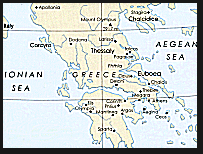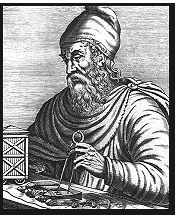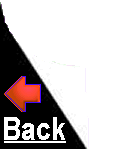
The Importance of that Cow
|

One extremely influential point regarding our roots is evident with the
traders from Canann.
Profit is a great incentive to be better with words
and be more accurate with numbers or counting than the other fellow.
Even the smallest and weakest creature can survive and be hugely successful
by being more intelligent than your opposition.
Being smarter will normally guarantee longer life, companionship,
safety, and a full stomach.
But in a world where mankind has to compete with the wild (or even
wild humans) - our true strengths are our intelligence plus our
collectiveness, community, or teamwork. This 'power
in numbers' requires communication, with the most powerful
method being - those - 'words'.
 Sometimes people refer to our dogs and horses as "dumb" animals.
While accurate, this is actually not because they are stupid. It is
because they don't have the same verbal skills as we humans to communicate
with each other. Modern analysis of their sounds reveals far more communication
than what was once assumed. Even a little prairie dog can yell (click the picture) and warn
others of danger.
The word "dumb" does not mean "stupid" in this case.
It means the inability to voice words - as in "deaf and dumb". But it is the
written or recorded words that give us a huge advantage. With every passing
generation we have more information to build on. Humans
don't have to reinvent the wheel. That ability gives us far more
opportunity for progress.
Sometimes people refer to our dogs and horses as "dumb" animals.
While accurate, this is actually not because they are stupid. It is
because they don't have the same verbal skills as we humans to communicate
with each other. Modern analysis of their sounds reveals far more communication
than what was once assumed. Even a little prairie dog can yell (click the picture) and warn
others of danger.
The word "dumb" does not mean "stupid" in this case.
It means the inability to voice words - as in "deaf and dumb". But it is the
written or recorded words that give us a huge advantage. With every passing
generation we have more information to build on. Humans
don't have to reinvent the wheel. That ability gives us far more
opportunity for progress.
On to the beginnings or roots of those words ...
To start at something near the beginning, we have to go
back about 5,000 years (3,000 years before Jesus)
to uncover some of the ancient cuneiform or hieroglyphic picture
words. One of those original words was simply a drawing of a
common cow or ox. The pervasiveness of the cow symbol in
so many cultures gives us a revealing representation of its universal
importance to the people of that day. The Egyptian
hieroglyph version of that word was
 ,
the symbol you saw on a previous page. While
this: ,
the symbol you saw on a previous page. While
this: was the Sumerian (Iraq) version, the Hebrew character from
approximately that same time period looked like this:
was the Sumerian (Iraq) version, the Hebrew character from
approximately that same time period looked like this:
 .
Today, this figure is so well known that Hebrew language
organizations use it as their iconic logo. .
Today, this figure is so well known that Hebrew language
organizations use it as their iconic logo.
It's intriguing to speculate why the Phoenicians chose this
particular symbol to be the very first one in their all new alphabet
of sounds. Obviously a popular character, we might consider
how important the cow was to the people of that time - and to this day
the cow is an extremely important part of our lives. While we may not
use them to pull our wagons anymore, not that many years ago dairy products
were hand delivered to our front porches every morning like
a newspaper - and we could not list all our other close associations
with cattle if we did so 'until the cows come home'.
There are plenty of people today who would
identify their car (or truck) as one of the things they could least do without
and for many if these ancient people, oxen even pulled their carts. At times, cows
even helped to plow their fields. Indeed, the sky itself has its Milky Way.
Why the cow symbol was picked to be first we can only contemplate, and
the choice could possibly have been simply random or arbitrary - but it is
fun to wonder about their thoughts. Did they argue about it?
Now - just for fun - take any one of those symbolic figures above - and turn
it upside down. Do you see it? Do you see your first letter?
Ah. You're probably ahead of us.
About 3,000 years ago or 1,000 years before Jesus, the cow symbol
above had been simplified down to
this: (obviously easier to draw).
This symbol was adopted by the Phoenicians (or Canaanites) as the first letter of
the original sound alphabet. Did they sit around and
discuss this? Did one person draw up the first alphabet while everyone
else said, "That looks okay to us"? Was there a 'vote'?
We'll probably never know but after discussion, their final draft for the first
letter looked exactly like
this: (obviously easier to draw).
This symbol was adopted by the Phoenicians (or Canaanites) as the first letter of
the original sound alphabet. Did they sit around and
discuss this? Did one person draw up the first alphabet while everyone
else said, "That looks okay to us"? Was there a 'vote'?
We'll probably never know but after discussion, their final draft for the first
letter looked exactly like
this: . .
Whenever we follow the historical progressions of
symbols or letters it seems that rotations, twists, mirror images
(one in particular changed everything), and
other gyrations are quite common. With sufficient pieces the path from
one classical symbol to the next can be easily discerned.
Now that you have seen the progression, the path from the
cow: to our letter A
is quite easy to see.
to our letter A
is quite easy to see.
Some of you may be already aware, the area referred to here as Canaan
(pronounced 'key-nun') is essentially what we know of today as
Palestine. Yes, this foundational alphabet which spread throughout
the world - began in the region of Palestine.
A thousand years before Jesus, the cow symbol and
21 other common drawings were used to construct the very first
alphabet based on sounds instead of words.
What we now call the Phoenician alphabet looked like this :
 Thousands of years old - the original alphabet of sounds -
and just look at all the familiar shapes. Try matching up
A B C D E, for example (don't forget rule #1, start on the right).
Find K L M N.
W and X are also obvious. The Phoenician alphabet is the very
foundation upon which
Latin, Greek, Hebrew, Arabic, English, and many other languages were built
(and you thought this was going to be hard).
The above defines our literary Roots.
Indeed, this was the point when all the other vagrant roots came together -
and the tree began. However it did not take long for the
original idea to start branching out.
It's a consistent trait for we humans - we simply love adding our own distinct
flair and style to things. A brief study of handwriting history or
music quickly reveals this. Within the timeline of alphabet development,
note the Phoenician original is 22 letters. The fact Hebrew is 22 as well
further demonstrates their close proximity.
Thousands of years old - the original alphabet of sounds -
and just look at all the familiar shapes. Try matching up
A B C D E, for example (don't forget rule #1, start on the right).
Find K L M N.
W and X are also obvious. The Phoenician alphabet is the very
foundation upon which
Latin, Greek, Hebrew, Arabic, English, and many other languages were built
(and you thought this was going to be hard).
The above defines our literary Roots.
Indeed, this was the point when all the other vagrant roots came together -
and the tree began. However it did not take long for the
original idea to start branching out.
It's a consistent trait for we humans - we simply love adding our own distinct
flair and style to things. A brief study of handwriting history or
music quickly reveals this. Within the timeline of alphabet development,
note the Phoenician original is 22 letters. The fact Hebrew is 22 as well
further demonstrates their close proximity.
The use of an alphabet to represent sounds instead of entire words was a brilliant
way to simplify writing and as with most good ideas, it spread fast.
In that day there were no copyrights or patents so
other languages and cultures quickly adopted this innovation while adding their own concepts
and solutions. Eventually, some of this individuality
came full circle and even caused minor changes in the original Phoenician version.
For example, look at the 2nd through 5th
characters: If we imagine those to be the 'E D C B'
in that early alphabet it would seem they are written backward. Of course,
we seem to be reading backward, too - so who is responsible for this alphabet
reversal?
If we imagine those to be the 'E D C B'
in that early alphabet it would seem they are written backward. Of course,
we seem to be reading backward, too - so who is responsible for this alphabet
reversal?
About 400 years before Jesus, the Greeks had adopted the sound alphabet
and had begun adding their own flare. Though they too began writing from
right to left, for a short period of time they started reversing their direction
when they reached each edge. So the first line was written right to left,
 the second line left to right, and so on. This was even more confusing than
it sounds, because the direction of the individual letters was also reversed
or 'mirrored' depending on the line! It's obvious why this was a
practice well worth abandoning, but we'll probably never know why they settled
on the 'non-Phoenician' left to right. The practice soon branched
to many other languages including Latin and our English.
the second line left to right, and so on. This was even more confusing than
it sounds, because the direction of the individual letters was also reversed
or 'mirrored' depending on the line! It's obvious why this was a
practice well worth abandoning, but we'll probably never know why they settled
on the 'non-Phoenician' left to right. The practice soon branched
to many other languages including Latin and our English.
 This is probably the
most problematic hurdle to get over when learning to read ancient or modern Hebrew, as
they are direct branches of the original alphabet and still read from right to left.
Whatever the reason for taking the opposite approach, it reversed the letters too.
This Greek 'reversal'
also caused the letters above - B, C, D, and E (as well as others)
- to turn the opposite way. Odd as it seems - this Greek reversal is
so noteworthy in human history, there are stories and very bad
jokes to this day about the Greeks getting things (ahem) turned around backward.
Such jokes and stories are thousands of years old.
This is probably the
most problematic hurdle to get over when learning to read ancient or modern Hebrew, as
they are direct branches of the original alphabet and still read from right to left.
Whatever the reason for taking the opposite approach, it reversed the letters too.
This Greek 'reversal'
also caused the letters above - B, C, D, and E (as well as others)
- to turn the opposite way. Odd as it seems - this Greek reversal is
so noteworthy in human history, there are stories and very bad
jokes to this day about the Greeks getting things (ahem) turned around backward.
Such jokes and stories are thousands of years old.


Yes - Numbers Count Too ! ...
|
|